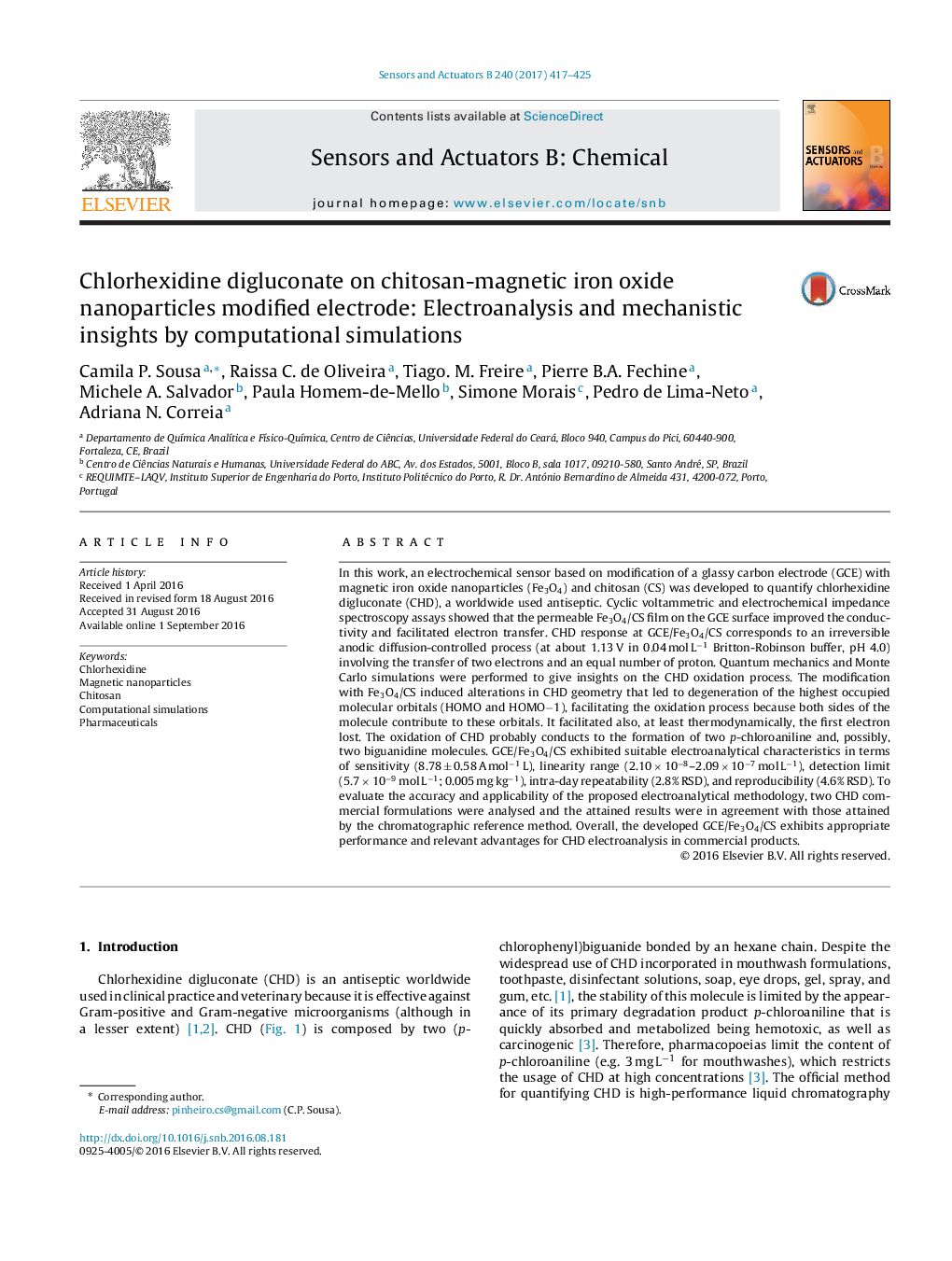| کد مقاله | کد نشریه | سال انتشار | مقاله انگلیسی | نسخه تمام متن |
|---|---|---|---|---|
| 5009592 | 1462051 | 2017 | 9 صفحه PDF | دانلود رایگان |

- An electrochemical sensor was developed to quantify chlorhexidine digluconate (CHD).
- A modificated GCE with magnetic iron oxide nanoparticles and chitosan was developed.
- Monte Carlo simulations were performed to give insights on the CHD oxidation process.
- GCE/Fe3O4/CS exhibited good analytical performance to quantify CHD.
- GCE/Fe3O4/CS was successfully applied to two CHD commercial formulations.
In this work, an electrochemical sensor based on modification of a glassy carbon electrode (GCE) with magnetic iron oxide nanoparticles (Fe3O4) and chitosan (CS) was developed to quantify chlorhexidine digluconate (CHD), a worldwide used antiseptic. Cyclic voltammetric and electrochemical impedance spectroscopy assays showed that the permeable Fe3O4/CS film on the GCE surface improved the conductivity and facilitated electron transfer. CHD response at GCE/Fe3O4/CS corresponds to an irreversible anodic diffusion-controlled process (at about 1.13 V in 0.04 mol Lâ1 Britton-Robinson buffer, pH 4.0) involving the transfer of two electrons and an equal number of proton. Quantum mechanics and Monte Carlo simulations were performed to give insights on the CHD oxidation process. The modification with Fe3O4/CS induced alterations in CHD geometry that led to degeneration of the highest occupied molecular orbitals (HOMO and HOMOâ1), facilitating the oxidation process because both sides of the molecule contribute to these orbitals. It facilitated also, at least thermodynamically, the first electron lost. The oxidation of CHD probably conducts to the formation of two p-chloroaniline and, possibly, two biguanidine molecules. GCE/Fe3O4/CS exhibited suitable electroanalytical characteristics in terms of sensitivity (8.78 ± 0.58 A molâ1 L), linearity range (2.10 Ã 10â8-2.09 Ã 10â7 mol Lâ1), detection limit (5.7 Ã 10â9 mol Lâ1; 0.005 mg kgâ1), intra-day repeatability (2.8% RSD), and reproducibility (4.6% RSD). To evaluate the accuracy and applicability of the proposed electroanalytical methodology, two CHD commercial formulations were analysed and the attained results were in agreement with those attained by the chromatographic reference method. Overall, the developed GCE/Fe3O4/CS exhibits appropriate performance and relevant advantages for CHD electroanalysis in commercial products.
135
Journal: Sensors and Actuators B: Chemical - Volume 240, March 2017, Pages 417-425